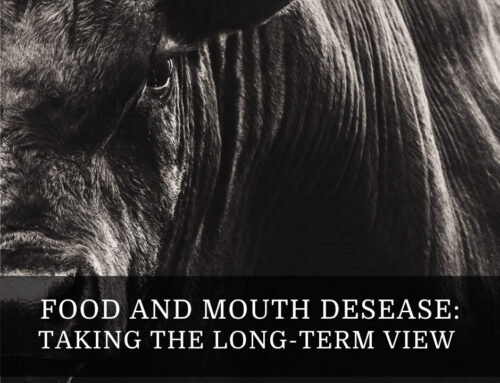July 2024: The cattle industry – together with the remainder of the red meat industry – is facing significant headwinds as it enters the second half of the year. From economic pressures to biosecurity concerns, farmers and industry stakeholders are under immense strain.
“We anticipated a tough 2024 and the end of last year and urged industry to tighten belts. Now, the reality has proven to be extremely demanding for all stakeholders involved,” says Roelie van Reenen, the Supply Chain Executive at Beefmaster Group.
Consumers are under pressure
He says that the value of products, given what consumers are willing to pay, has created immense pressure on pricing.
“The cost of animal feed has skyrocketed, making it incredibly challenging to produce beef at a price point that is feasible for both producers and consumers,” says van Reenen.
Consumers, too, are feeling the strain. Economic pressures have led to a decrease in disposable income, affecting their purchasing power. This, in turn, has a direct impact on the demand for beef, creating a challenging cycle for industry players and farmers who are already struggling with high production costs.
Subdued global demand
According to global beef reports, the demand for beef worldwide is predicted to remain steady in 2024. Retail prices for beef have risen across most markets since 2019, and the impact of inflation in the last two years has changed consumer demand.
In China, consumer demand for beef has declined amidst a multifaceted economic slowdown. Although China’s beef market has been growing in both output and consumption, with the country producing 7.5 million tonnes of beef in 2023 and increasing imports to match the rising demand (11 million tonnes), this demand is now easing. It is expected to grow by just 0.4% in 2024.
“The world’s second-largest economy is struggling with a property market crisis and slow growth,” says van Reenen. “Demand for SA beef could increase, but at this stage we are uncertain how the global situation will impact us for the remainder of the year. Exports and new markets for SA beef remain a key lever to stimulate growth in our country.”
Biosecurity concerns and the impact of Foot-and-Mouth disease
The industry is also grappling with a lack of adequate biosecurity, particularly given the recurring outbreaks of Foot-and-Mouth Disease (FMD). The Eastern Cape is the most recent casualty of the disease, when it was announced in July that 24 farms were confirmed positive for FMD in the area.
“The lack of stringent biosecurity measures and self-discipline within the industry have exacerbated the situation. FMD is economically devastating, and its impact reverberates through the entire value chain.”
A glimmer of hope: positive weather outlook
Despite the myriad challenges, there is a silver lining on the horizon. Van Reenen says that the weather forecast for the upcoming year is promising for farmers, with predictions of good rainfall attributed to the La Niña weather phenomenon.
“We are cautiously optimistic about the good indication for rainfall for the country, but the industry must continue and ensure it can sustain production until the rains arrive.
“Against this, primary producers will still need to tighten their belts and keep investing in their businesses. In addition, we need to maintain and defend the markets that we have,” concludes van Reenen.






